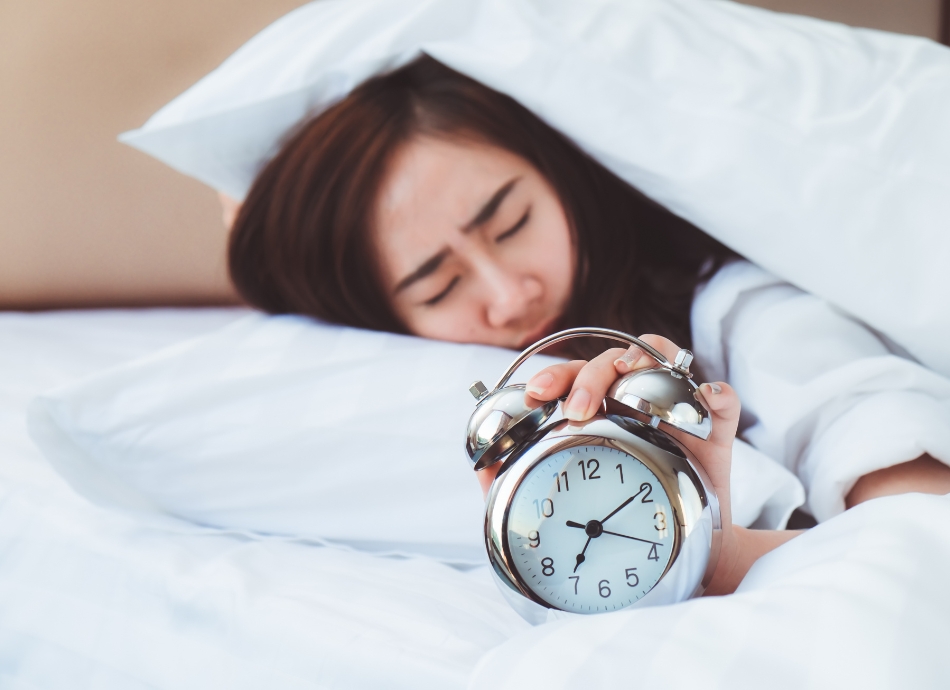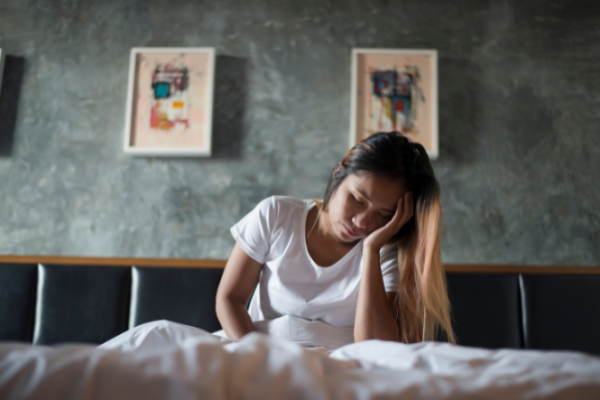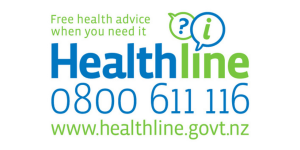Wishing everyone a safe and happy Christmas and New Year – Meri Kirihimete from the Healthify team.
Delayed sleep phase disorder
Also called delayed sleep phase syndrome
Key points about delayed sleep phase disorder
- Delayed sleep phase disorder is a sleep problem where your body's internal clock (the 24 hour circadian rhythm) is shifted by up to 2 hours or more, causing problems with falling asleep and waking up at a socially normal time.
- The resulting lack of a full night's sleep affects how you function while you're awake.
- It can occur at any age but it’s not uncommon in teenagers and young adults and may make it hard to wake in time for school or work.
- Treatment mainly involves improving sleep hygiene and changing your lifestyle and bedtime environment to get better quality sleep.

Delayed sleep phase disorder (DSPD) is a sleep problem where your body's internal clock (24 hour circadian rhythm) is shifted by up to 2 hours or more, causing problems with falling asleep and waking up at a normal time.
People with DSPD go to sleep later and wake later even with a regular sleep schedule. This affects how well they sleep, when they sleep and how they function while they're awake. It may affect your mood and may be linked with developing depression.
DSPD can occur at any age but it’s more common in teenagers and young adults, and may make it hard to wake in time for school or work. It can occur if you have an irregular sleep schedule (eg, if you're a shift worker) or if you're travelling across time zones (jet lag). It may also occur if you're bed-bound due to an illness or if you're affected by a neurological illness such as a stroke.
Note: Delayed sleep phase disorder is also called delayed sleep phase syndrome.

Image credit: Canva
People with DSPD fall asleep and wake later than they want to, later than is socially acceptable or later than usual sleep and wake times.
- Sleep and wake times are delayed by up to 2 hours or more.
- For example, they might not be able to go to sleep until 4 am and find it hard to wake up until the afternoon.
- Usually a person with DSPD has no problem staying asleep, but will complain of being unable to fall asleep.
- This often results in:
- trouble waking up in the morning in time to go to work or school
- extreme daytime drowsiness and difficulties concentrating
- trouble staying alert during the day
- having low mood.
DSPD is thought to happen when your internal clock (circadian rhythm) is out of sync with the environment. Your circadian rhythm is on a 24-hour cycle and lets you know when it's time to sleep and when it's time to wake. Cues in the environment (eg, light and darkness, eating and physical activity) influence the sleep-wake cycle.
Your body's circadian rhythm is controlled mainly by the hormone melatonin. Melatonin is made by the pineal gland in your brain and helps to control your body's sleep pattern and sleep-wake cycle. For most people, melatonin levels start to increase between 7pm and 11pm and reach their peak values (maximum sleepiness) between 2am to 4am. Melatonin production is suppressed by light but regular exposure to natural or sun light is crucial for normal circadian rhythm.
With teenagers, DSPD may be partly due to biological reasons as the onset of the melatonin hormone production begins on average about an hour later in teens than adults. Staying up late to do homework, watch TV, play online games or use the internet will make the sleep delay worse.
There's no specific medical test to diagnose DSPD. Diagnosis usually involves your healthcare provider asking you questions about your sleep patterns and sleep environment. You should be asked to keep a sleep diary to note when you go to bed, when you fall asleep, and when you wake and what you do in the evening before bed. This log helps your healthcare provider get a full picture of your sleep habits and suggest possible changes.
Sometimes an actigraph (wrist watch-like device) is used to measure your sleep-wake pattern for a period of up to 2 weeks. It records your movement to help to determine when you are asleep or awake.
A sleep study such as a polysomnography is generally used to rule out other significant sleep disorders such as obstructive sleep apnoea or narcolepsy.
The goal of treatment for DSPD is to gradually shift your sleep-schedule to an earlier time over a number of weeks and then keep to it. You should try to reset your sleep routine. The use of a diary may help during this process.
The treatment includes improving sleep habits and sleep hygiene (see below).
Bright light therapy in the morning
Research shows that bright light exposure in the first 1 or 2 hours of the morning helps to re-set your circadian rhythm. This may be from natural sunlight or, if needed in the middle of winter, from a light box. With your circadian rhythm re-set, you should fall asleep earlier and wake up earlier.
It's important to note that the bright blue light from computer screens can lower your natural melatonin levels and stop you from feeling as sleepy at night. For this reason, you should avoid using your computer or other electronic devices for at least 1 to 2 hours before your planned bedtime, and set devices to limit the amount of blue light emitted. Avoiding bright light during the evening hours will also help.
Improving sleep hygiene
Sleep hygiene refers to your lifestyle routines and bedtime environment that make it easier or harder to get better quality sleep. Changes you can make to improve your sleep hygiene include:
- Avoiding TV, computer screens and mobile phones for an hour or two before bed, as the artificial blue light suppresses the production of melatonin and interferes with your natural cues to sleep.
- Using your bed as the place to sleep and not for work or catching up on social media.
- Making sure your bedroom is cool, dark and as quiet and comfortable for sleep as possible.
- Getting enough exercise and light during the day – exercising outdoors early or in the middle of the day (but ideally not too close to your bedtime).
- If you have successfully treated your DSPD, going to bed at the same time every night. It's important that you keep your bedtime and wake up time as constant as possible. Try not to have a big difference between your schedule on weekdays and weekends (no more than 2 hours) as this will further disrupt your circadian rhythm each time.
- Creating your own bedtime ritual (eg, if you worry about things to do tomorrow, to write them down, making a hot, milky drink or taking a warm bath) and starting your ritual at the same time each night.
- Reducing or avoiding caffeine, cigarettes and alcohol, especially in the evenings.
Read more tips to improve your sleeping habits and use the information and worksheet in Te Kete Haerenga and sleep to help you work on your sleep patterns and behaviours.
Melatonin supplements
Melatonin supplements may be used to readjust your body clock to the desired time by taking it in the hours before your bedtime. Talk to your healthcare provider about whether melatonin is an option for you. Read more about melatonin.
Apps reviewed by Healthify
You may find it useful to look at some sleep apps.
How much sleep do I need?(external link)
Common sleep problems(external link)
Sleep apps(external link)
How shift work affects your sleep(external link)
The importance of sleep(external link)
How does food and drink affect your sleep?(external link)
Insomnia | Rarunga moe(external link)
How does sleep affect mental wellbeing?(external link)
Te Kete Haerenga – sleep(external link)
Te Kete Haerenga – sleep tips tracker [PDF, 126 KB]
Brochures
Delayed sleep phase syndrome(external link) American Thoracic Society, US
Apps
References
- Delayed sleep phase disorder(external link) Sleep Foundation, US, 2024(external link)
- Delayed sleep phase syndrome(external link) American Thoracic Society, US, 2019
- Circadian rhythm disorders(external link) Australasian Sleep Association, Australia
Credits: Healthify editorial team. Healthify is brought to you by Health Navigator Charitable Trust.
Reviewed by: Angela Lambie, Pharmacist, Auckland; Dr Roland Meyer, Specialist Physician, Respiratory and General Medicine
Last reviewed:





